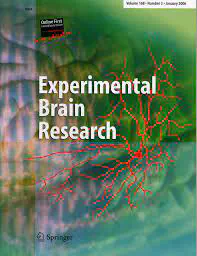Interactions between arm and leg neuronal circuits following paired cervical and lumbosacral transspinal stimulation in healthy humans

Abstract
Transspinal (or transcutaneous spinal cord) stimulation is a promising noninvasive method that may strengthen the intrinsic spinal neural connectivity in neurological disorders. In this study we assessed the effects of cervical transspinal stimulation on the amplitude of leg transspinal evoked potentials (TEPs), and the effects of lumbosacral transspinal stimulation on the amplitude of arm TEPs. Control TEPs were recorded following transspinal stimulation with one cathode electrode placed either on Cervical 3 (21.3 ± 1.7 mA) or Thoracic 10 (23.6 ± 16.5 mA) vertebrae levels. Associated anodes were placed bilaterally on clavicles or iliac crests. Cervical transspinal conditioning stimulation produced short latency inhibition of TEPs recorded from left soleus (ranging from − 6.11 to -3.87% of control TEP at C-T intervals of -50, -25, -20, -15, -10, 15 ms), right semitendinosus (ranging from − 11.1 to -4.55% of control TEP at C-T intervals of -20, -15, 15 ms), and right vastus lateralis (ranging from − 13.3 to -8.44% of control TEP at C-T intervals of -20 and − 15 ms) (p < 0.05). Lumbosacral transspinal conditioning stimulation produced no significant effects on arm TEPs. We conclude that in the resting state, cervical transspinal stimulation affects the net motor output of leg motoneurons under the experimental conditions used in this study. Further investigations are warranted to determine whether this protocol may reactivate local spinal circuitry after stroke or spinal cord injury and may have a significant effect in synchronization of upper and lower limb muscle synergies during rhythmic activities like locomotion or cycling.